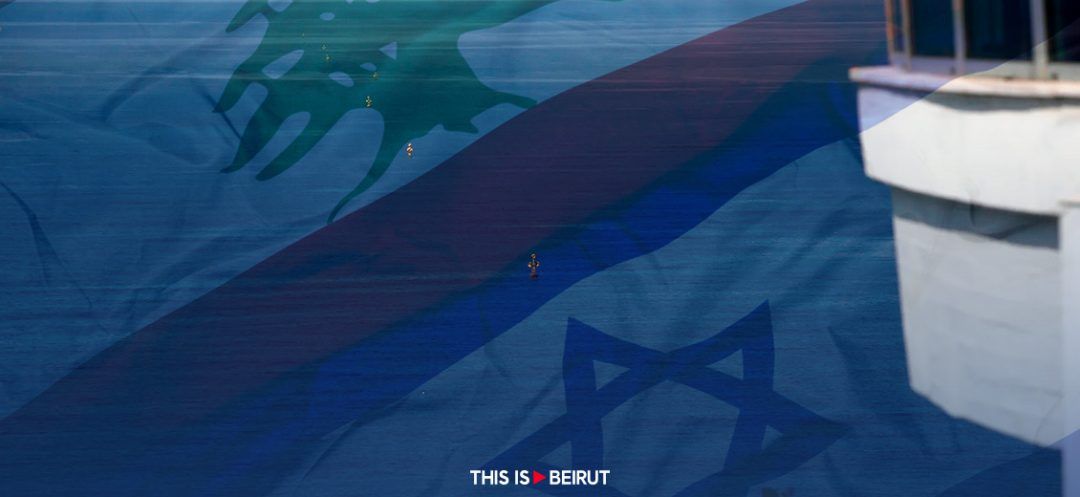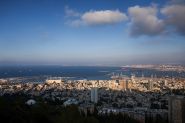- Home
- War in the Middle East
- Lebanon-Israel Maritime Borders Agreement: Myths and Realities

Since the surprise Al-Aqsa Flood operation carried out by Hamas against Israel on October 7, triggering a destructive war by Tel Aviv against Gaza, southern Lebanon has been under high tensions and increasing risk of escalation. This prompted a flurry of diplomatic efforts with a dual objective: restoring calm to the southern border and seeking, among other things, to revive negotiations on land borders between Lebanon and Israel.
Once again, US Presidential Envoy Amos Hochstein, known for his role in the maritime negotiations between the two countries, is at the forefront. In his meetings with Lebanese officials, discussions revolved around the implementation of UN Security Council Resolution 1701 (which ended the 2006 war between Hezbollah and Israel), in addition to the 13 disputed border spots along the Blue Line drawn by the UN after Israel's withdrawal in 2000. Discussions also covered the intermediate point B1 on the ridge line connecting Ras el-Naqoura to point BP1, the Shebaa farms, and the Kfarchouba hills occupied by Israel during the 1967 Six-Day Mideast War, among other things.
The agreement on maritime borders, concluded between the two countries, is characterized by multiple flaws that ought to be highlighted.
Although the agreement signed on October 27, 2022 was hailed in Lebanon, Israel and the US as a historic achievement, one might ask, does this claim stand its ground when closely examined from a Lebanese perspective?
The dispute over the maritime demarcation line between Lebanon and Israel persisted for over a decade. A war of positions pitted them against each other, with Israel claiming Line 1 as the northern maritime border and Lebanon asserting Line 23 as its southern border. Disagreement was over a disputed zone of 860 square kilometers. The opening of indirect negotiations on October 14, 2020 was conducted under the auspices of the United Nations, with two successive American mediators facilitating the talks, namely John Desrocher and later on, Amos Hochstein. From the start, Lebanon introduced a new demarcation, Line 29, claiming an additional 1430 square kilometers of maritime territory. To officially endorse it with the United Nations, a simple amendment to Decree 6433, that established Line 23 in 2011, was required. Unfortunately, the Lebanese political authorities never took this step, and Line 23 remained the official boundary.
After various twists and turns, an agreement was reached between Israel and Lebanon, both accepting Line 23. For Israel, it marked a groundbreaking signing with an "enemy nation," securing its northern (maritime) border and enabling the unimpeded exploitation of its Karish gas reserves, without Hezbollah’s interference. For Lebanon, it meant joining the "ranks of gas and oil-producing nations," with the hope of "revitalizing the country's economy and steering through the country’s persisting crises."
Numerous myths circulated regarding this agreement. Here are the five main ones, along with explanations on their precise implications.
Myth 1: "This agreement will save Lebanon and usher in prosperity and economic development."
Reality: No revenue is expected before 7 to 10 years.
Given the dire economic and financial situation in Lebanon, many urged the signing of the agreement at any cost. However, those well-versed in such matters understand that Lebanon can expect revenue from its hydrocarbons within a timeframe of seven to ten years. In fact, the initial drilling in Qana proved unsuccessful, and it is essential to wait between six and twelve months before proceeding with further explorations. Once commercially viable resources are discovered, it takes around 3 years before considering the development phase and subsequently the exploitation phase.
Myth 2: "Lebanon obtained all its rights in hydrocarbons."
Reality: By refraining from submitting Line 29 through the amendment of Decree 6433, Lebanon forfeited a key bargaining chip that could have granted it an additional 500 to 700 square kilometers of maritime territory.
Indeed, Line 23, presented to the United Nations in 2011, was granted. But did it align with all that Lebanon could strive for? Clearly not. It was disclosed that the government had a UKHO study affirming that it could ask for way more, yet some people quickly brushed it aside. Adding to the complexity, it was later discovered that Israel had drawn this line in 2009 to delineate its northern blocks. Where does the discrepancy lie?
Looking back, one of the disagreements centered on the impact attributed to the "Tekhelet islet" located on the demarcation line. Positioned between the zero effect of Line 29 and the full impact of Line 1 and HOF, an expert agreed on by both parties could have reached a 50% compromise. However, Line 29 should have been officially established beforehand.
Myth 3: "Qana as a whole belongs to Lebanon."
Reality: Every area located south of Line 23 belongs to Israel.
Saying that Lebanon can conduct drilling across the entire gas field doesn't automatically imply ownership of the potential revenues from its exploitation. Furthermore, the agreement mentions that "Israel has economic rights in the prospect." Furthermore, the development and exploitation phases hinge on the successful negotiation of a financial agreement between TotalEnergies, the operator of Block 9, and Israel.
In practice, this grants the Israelis a veto right that could jeopardize the exploitation of this field since it depends on their goodwill. Therefore, at this point, according to international laws and practices, what lies north of Line 23 belongs to Lebanon, while what lies south of this line belongs to Israel.
Myth 4: "Lebanon did not compromise on its sovereignty."
Reality: By confirming the status quo of the markers’ line, the agreement legitimizes Israel's illegal occupation of 2.25 square kilometers of maritime areas.
This line was unilaterally established by Israel during its withdrawal from Lebanon in 2000. Despite political actors’ denials, asserting that they "made no concessions on the markers’ line and that the agreement has no legal implications in this regard," it unfortunately legitimizes an infringement that, until then, was not documented in any official records. The illegal occupation of a portion of Lebanese territory for security reasons clearly contradicts Lebanon's sovereignty interests.
Myth 5: "The agreement will ensure security and stability on the southern border with Israel."
Reality: In this region, the decision on war or peace lies with Hezbollah, not the Lebanese political authorities.
The Lebanese, especially the residents of the South, worn out after decades of violence and destruction, could only rejoice at the prospect of a receding war threat.
Unfortunately, despite the shared interest in the security and stability of the borders between Lebanon and Israel, the country’s southern border has been under serious tension since Hamas’ attack against Israel on October 7. Although contained, daily skirmishes persist between Hezbollah and Israel. No one can really predict whether the situation is under control or not, and if the risk of escalation and sliding into a new destructive war is real. When it comes to matters of war and peace on the ground, the Lebanese perceive the clear absence of political authorities.
In a nutshell, in order to gain broader acceptance of this agreement, Lebanese political authorities concealed the many flaws and pitfalls that it contained. Despite some positive aspects, it appears more as a missed opportunity than the triumphant victory proclaimed by Lebanese leaders. One notable flaw is the failure, mainly in the context of upcoming land negotiations, to designate Ras el-Naqoura — the land border point defined in 1923 by Paulet-Newcombe — as the starting point for the maritime demarcation line between the two countries.
As negotiations on land borders could resume in the near future, will Lebanese political leaders draw lessons from the maritime talks to avoid the shortcomings that compromised Lebanon's legitimate interests and sovereignty?
*Author of: Occasion manquée? Les secrets des négociations maritimes Liban-Israël (Missed Opportunity? The secrets of Lebanon-Israel maritime negotiations), Dar An Nahar publishing, 2023.
Read more



Comments